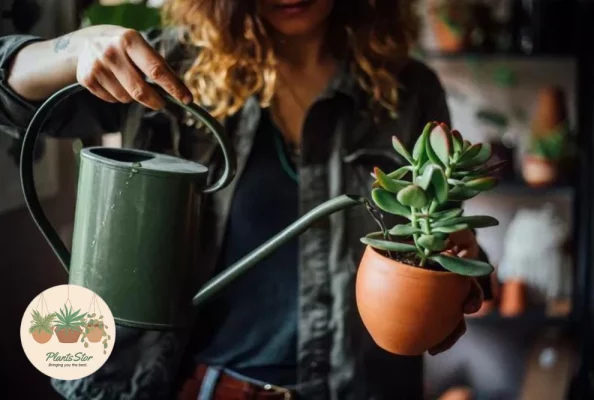Introduction
Succulents are renowned for their ability to thrive in arid conditions, making them a popular choice for both novice and experienced gardeners. However, one of the most common mistakes made in succulent care is improper watering. To ensure your succulents stay healthy and vibrant, it’s crucial to establish a well-structured succulent watering schedule. In this guide, we will walk you through the essential aspects of a succulent watering routine, helping you maintain your succulents in peak condition.
Understanding Succulent Watering Needs
Succulents have adapted to store water in their leaves, stems, or roots, allowing them to survive prolonged periods of drought. This means they are more susceptible to overwatering than underwatering. Overwatering can lead to root rot and other issues, so understanding when and how to water is vital.
1. Frequency of Watering
The frequency of watering your succulents largely depends on environmental factors like temperature, humidity, and the type of succulent you’re growing. As a general guideline, you should water your succulents when the top inch (2.5 cm) of the soil has completely dried out. During the growing season (spring and summer), this may mean watering every 1-2 weeks. In contrast, during the dormant season (fall and winter), you can water less frequently, perhaps every 3-4 weeks.
2. Watering Techniques
When watering succulents, it’s essential to do so thoroughly but not excessively. Use a watering can with a narrow spout or a squeeze bottle to deliver water directly to the soil, avoiding the leaves. Water until you see excess water draining out of the pot’s drainage holes. Discard any water that collects in the saucer beneath the pot to prevent root rot.
3. Time of Day
Watering your succulents in the morning is generally recommended. This allows any excess moisture on the leaves to evaporate during the day, reducing the risk of fungal problems. Avoid watering in the evening, as this can leave the plants susceptible to nighttime cold and moisture.
4. Rainfall Considerations
If you live in an area with regular rainfall, adjust your watering schedule accordingly. During rainy periods, you may need to water less frequently, or even skip watering altogether, to prevent overwatering. Be vigilant and adapt your schedule as needed.
Choosing the Right Pot and Soil
Selecting the appropriate pot and soil mix can significantly impact your succulent watering schedule. Ensure that your pots have good drainage holes to allow excess water to escape. Choose a well-draining succulent potting mix or make your own by adding perlite or coarse sand to regular potting soil. The right pot and soil will help prevent waterlogged roots and maintain the health of your succulents.
Monitoring Your Succulents
One of the keys to a successful succulent watering schedule is paying close attention to your plants. Regularly check the soil’s moisture level by inserting your finger into the soil. If it feels dry at the top inch (2.5 cm), it’s time to water. Conversely, if it still feels moist, hold off on watering for a few more days.
Conclusion
Mastering the art of succulent watering is essential for keeping these resilient plants healthy and thriving. By understanding your succulents’ specific needs, choosing the right pot and soil, and monitoring soil moisture, you can establish a watering schedule that ensures your succulents receive the perfect amount of hydration. Remember that it’s always better to underwater than overwater, as succulents are designed to withstand drought. With a little care and attention, you can enjoy the beauty of your succulent garden for years to come.

